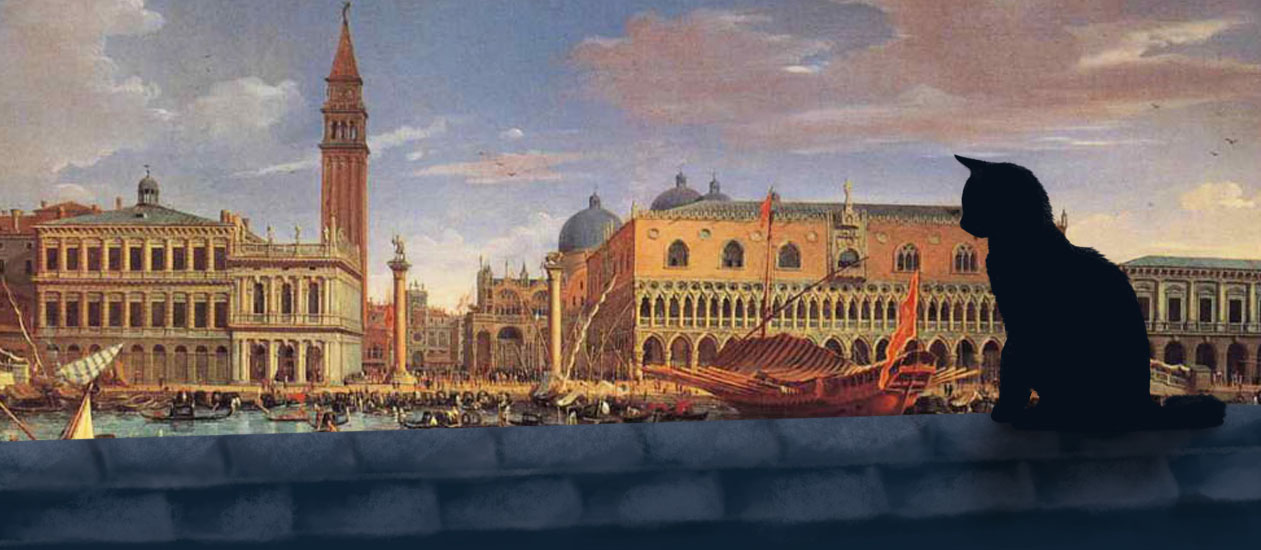Venice
Venezia
No city that's sinking into a damn swamp has any right to be that powerful. The sooner the Turks kick them out of Egypt, the better.
Venice is the capital of the Republic of Venice which holds territory all along the Adriatic coast. The city grew powerful by controlling trade coming along the Silk Road into Europe.
Venice is known as the city with a thousand secrets. Its twisting canals, hundreds of bridges, and twisted maze of alleys makes it both frustrating and fascinating to navigate. Its markets overflow with exotic goods newly-arrived from Asia and every turn brings you to new faces speaking new languages. Even more disorienting, for a full half of the year, residents wear elaborate carnival masks so every person you pass is adorned in feathers and sequins.
Demographics
Venice is a diverse city. It's considered the gateway to Europe for travellers coming from the Near East, or the gateway to Asia for Europeans. As a crossroads city, the population comes from all over Eurasia. Although Italian is the most common language on the streets, no one would blink an eye at hearing Turkish, Arabic, Persian, or any of the languages of Europe.
Religious Breakdown
- 45% Church of Venice
- 18% Catholic
- 23% Muslim
- 10% Orthodox Christian.
- 4% Coptic Christian
Infrastructure
As a city built on canals, Venetians had to get creative with their infrastructure. Canals serve the purpose of roads throughout much of the city, with only narrow walking paths on land.
The infrastructure Venice is most famous for are the so-called Venetian Walls. By placing two pathstones across from each other, an energy barrier can be erected that keeps out water. The formula for creating a barrier was discovered by Venetian Alzamaster Maddalena Morosini, while studying at the Palais d'Or in 1718. When active, Venetian walls appear like a shimmer in the air stretching between two crystals. Nothing physical can pass through the barrier while it's active.
These barriers are set up around most public squares, markets, or ports (or surrounding a noble family's home) to be activated at times of high tide. Though most of them are only a few feet high and occasionally the water rises past them, they serve as barriers against flooding that can be erected at a moment's notice, and taken down just as quickly to allow access to the canals again when the tide goes out.
These walls have given rise to another phenomenon: the Venetian mark, a faint burn scar on one's shins caused by repeatedly stumbling into an active barrier. In the 1730s, this mark became quite popular elsewhere in Europe and gentlemen scuffed their stockings with charcoal to pretend they had been damaged by Venetian walls and, therefore, that the gentleman had spent significant time in the exotic city.
Assets
As the centre of the Republic of Venice, the city has assets throughout the Adriatic and into the Mediterranean. Significant territorial assets include the Morea peninsula, which was taken from the Turks in 1684, the island of Crete, and Egypt.
Venice conquered Egypt in 1355, taking advantage of the huge population losses suffered by the Mamluk Sultanate during the Black Death and subsequent political turmoil to overthrow the local rulers. Since then, it has been the crown jewel in the city's empire, especially after they completed the Cairene Canal in 1601 to expedite trade to the Indian Ocean.
Type
City
Population
116,000
Inhabitant Demonym
Venetian


